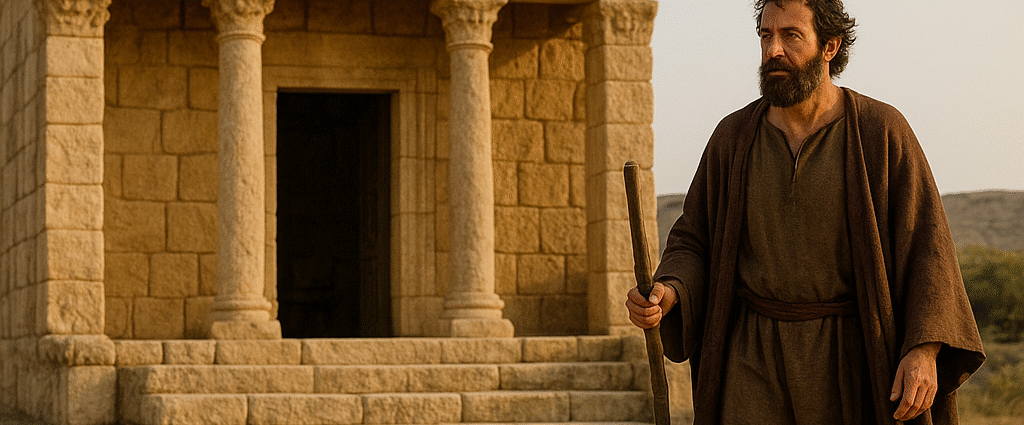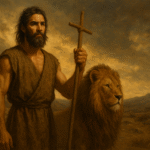Charting the Lion-hearted Road: Paul’s Missionary Journeys and the Steel of His Courage
The book of Acts reads like a travel journal etched into granite. Its pages trace the footprints of a man who refused to bow before political intimidation, personal agony, or spiritual opposition—Saul of Tarsus, whom we know as the apostle Paul. What began on the Damascus Road as a blinding collision with the risen Christ became a lifelong expedition through cities, seas, and prisons, all fueled by a singular purpose: to proclaim that Jesus is Lord. Paul’s story is not a sun-washed cruise through Mediterranean ports; it is a chronicle of scars and storms, a testimony to what unflinching faith looks like when stretched to its human limits.
Journey One: Cyprus to Pisidian Antioch (Acts 13–14)
Launched in A.D. 47 from Syrian Antioch, Paul and Barnabas sailed for Cyprus—Rome’s grain-rich island fortress. In Paphos they confronted Elymas the sorcerer face-to-face, challenging demonic deception under the nose of Sergius Paulus, the proconsul. That bold stand won a Roman governor while painting a target on Paul’s back. From there the pair crossed the open sea to Perga in Pamphylia and pressed north into the rugged mountains of south-central Anatolia. Roman milestones still dot the Via Sebaste, the military highway Paul followed to Pisidian Antioch. Malaria, bandit raids, and sheer altitude made the pass murderous; yet Paul climbed it with the fire of fresh conviction. In Antioch his sermon shook the synagogue, splitting the city and forcing him out under threat of violence. Iconium, Lystra, and Derbe followed in rapid succession—harvest fields punctuated by hostility. At Lystra, stones meant to silence him left his body limp outside the gate; bruised and bleeding, he stood, walked back into town, and preached again the next day. His courage was not cinematic bravado; it was a deliberate choice to value the gospel above comfort, reputation, or pulse.
Journey Two: Macedonia and the Birth of European Churches (Acts 15:36–18:22)
After the Jerusalem Council affirmed Gentile freedom from the Mosaic yoke, Paul set out once more, this time with Silas. He revisited the Galatian churches to fortify them, then pressed westward. At Troas he received a midnight vision: a Macedonian man begging, “Come over and help us.” Crossing the narrow strait from Asia to Europe was more than geography; it was a strategic leap that redirected the flow of history. Philippi, a Roman colony hardened by veterans of Caesar’s legions, became Paul’s beachhead. A demonized slave girl’s deliverance triggered a riot, and Paul’s reward was a midnight incarceration, his back striped by rods, his feet locked in stocks. Yet from that prison came hymns so potent that an earthquake flung the doors wide. Paul did not run; he stayed to rescue a suicidal jailer and baptized his family before dawn.
Thessalonica erupted in mob violence; Berea embraced the word but soon felt imported hostility; Athens offered philosophical ridicule; Corinth drowned him in moral decadence. Still he reasoned in synagogues and marketplaces, building congregations from merchants, former temple prostitutes, Roman officials, and local artisans. When intimidation rose to a fever pitch, the Lord appeared in a night vision: “Do not be afraid…for I have many people in this city.” Paul stayed eighteen more months. Courage sometimes looks like planting your feet when every instinct screams to run.
Journey Three: Strengthening the Spine of the Church (Acts 18:23–21:17)
The third circuit, roughly A.D. 53-57, centered on Ephesus—the commercial juggernaut of Asia Minor and home to Artemis’s towering temple. For two years Paul lectured daily in the rented hall of Tyrannus, training believers who carried the gospel to every corner of the province. Miracles crowned the message; sorcerers burned their scrolls in a public bonfire worth fifty thousand drachmas—a financial sacrifice equivalent to several million dollars today. But gospel fire ignited economic backlash. Silversmiths who profited from idol trinkets whipped Ephesus into a stadium-sized frenzy, chanting “Great is Artemis!” for two solid hours. Only Roman police lines and the intervention of civic leaders prevented Paul’s lynching.
His itinerary threaded through Macedonia, Greece, and back across the Aegean while plots thickened. Luke’s terse note—“he decided to return through Macedonia because the Jews made a plot against him”—hints at ambushes we can scarcely imagine. Paul counted the cost in raw numbers to the Corinthians: imprisonments beyond measure, countless floggings, five synagogal lashings, three Roman beatings, one stoning, shipwrecks, sleepless nights, hunger, cold, and constant danger on roads and rivers (2 Cor 11:23-28). Yet he pressed on. Conviction made him unstoppable; grace made him tender. Between travel legs he wrote letters—Galatians, 1-2 Corinthians, Romans—doctrinal steel mingled with pastoral tears.
The Voyage to Rome: Forth Mission or Final Exodus? (Acts 27–28)
Arrest in Jerusalem set the stage for Paul’s climactic voyage. Two years under Caesarean confinement preceded a perilous winter crossing of the Mediterranean. Luke narrates the storm with mariner’s precision: the nor’easter, the futile undergirding of the hull, the fourteen-day blackout, the ship’s eventual breakup on Malta’s reef. Paul moved among panicked sailors with calm authority—praying, urging them to eat, assuring them of God’s promise that every life would be spared. Courage did not exempt him from the storm; it carried him through it while preserving those who traveled with him. Months later, chains rattling, he walked the Appian Way under the shadow of Nero’s Rome. From a rented house under guard he preached “with all boldness and without hindrance” for two more years, proving that Caesar’s masonry could not muzzle Christ’s messenger.
What Paul Teaches the Modern Disciple
Historical hindsight can romanticize Paul’s journeys, but the apostle never wore rose-tinted glasses. He stared down mobs, magistrates, and malignant spirits with open eyes and a heart set like flint. His courage was not the absence of fear—it was the mastery of fear by a greater loyalty. He knew the names of his wounds and still counted them “light and momentary troubles” compared to the glory ahead. He refused to sideline the gospel for cultural convenience, financial safety, or personal peace. In a world that prizes comfort and applauds calculated caution, Paul’s life confronts us with a hard question: Do we believe the message enough to bleed for it?
Rome eventually struck off Paul’s head, but it could not sever his legacy. Every congregation he founded, every letter he penned, stands as living evidence that one Spirit-empowered life can rattle empires and redraw eternity for millions. The same Spirit breathes today. If the lion-hearted apostle could sing through shackles, kindle revival in pagan capitals, and steer sinking ships through ravenous seas, then we—freed men and women, armed with scripture and the indwelling Christ—are without excuse. Let us preach when culture invites and when it forbids, love when it’s easy and when it costs, and carry the gospel across whatever frontiers our generation still fears to cross. Paul ran his race with scars; may we pick up the baton with the same unbreakable courage and run until the King returns.



